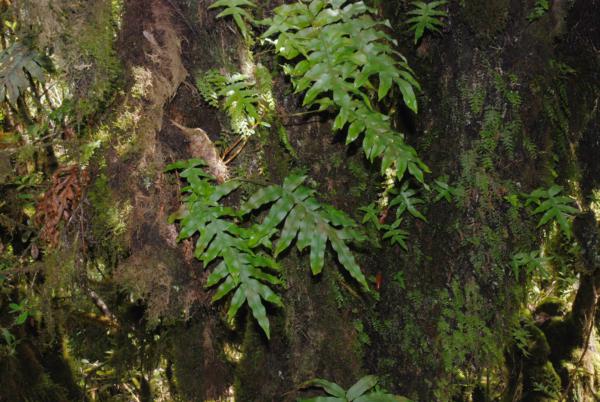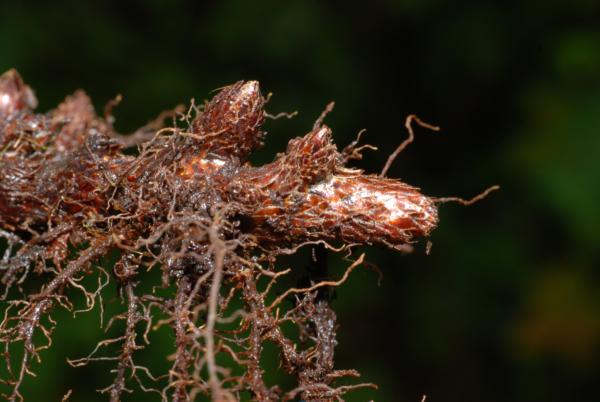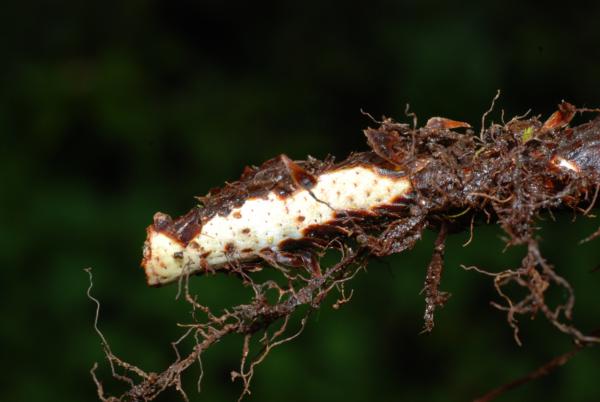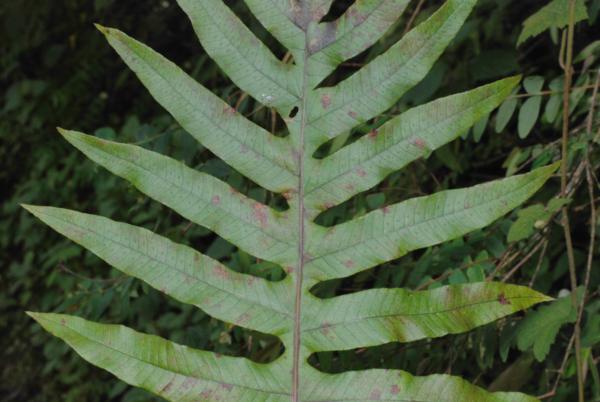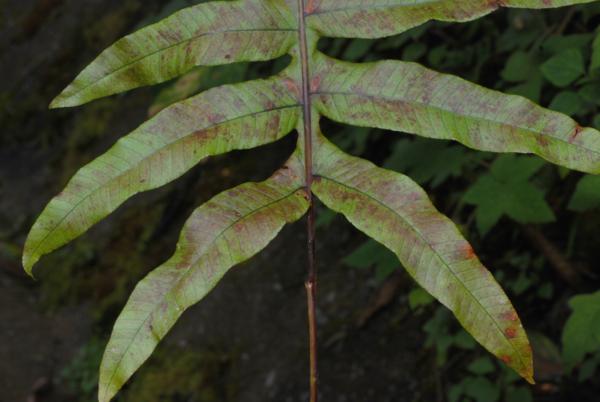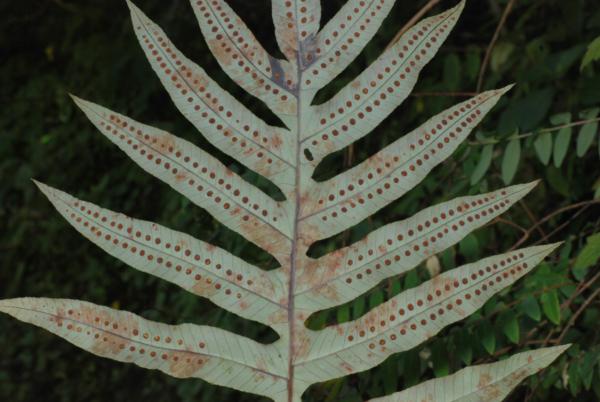
Selliguea ebenipes (Hook.) S.Linds.
Family
Polypodiaceae
Nomenclature
Selliguea ebenipes (Hook.) S.Linds., Edinburgh J. Bot. 66: 356. 2009. – Polypodium ebenipes Hook., Sp. Fil. 5: 88. 1863. – Pleopeltis ebenipes (Hook.) Bedd., Handb. Ferns Brit. India: 363. 1883. – Phymatodes ebenipes (Hook.) Ching, Contr. Inst. Bot. Natl. Acad. Peiping 2: 86. 1933. – Crypsinus ebenipes (Hook) Copel, Gen. Fil.: 206. 1947; Tagawa & K.Iwats., SouthE. Asian Stud. 5: 60. 1967; Tagawa & K.Iwats., Fl. Thailand 3: 561, f. 56.9. 1989; Boonkerd & Pollawatn, Pterid. Thailand: 266. 2000. – Pichisermollia ebenipes (Hook.) Fraser-Jenk., Taxon. Revis. Indian Subcontinental Pteridophytes 49. 2008. – Pichisermollodes ebenipes (Hook.) Fraser-Jenk., Indian Fern J. 26(1-2): 122. 2010.
Description
Rhizome long creeping, 3–5 mm diam., very densely scaly throughout; scales stiff, subdeltoid with round base, or narrower, 4–7 by about 2 mm, nearly black on central portion of abaxial surface, deep brown in other parts, shining, with irregularly toothed thinner margin. Stipes jointed to rachis on distinct scaly phyllopodia, stramineous or brown, 7–14 cm long, sparsely scaly with scales similar to those on rhizome but smaller and more or less thinner. Laminae deeply pinnatifid, oblong, ovate, up to 17 cm both in length and breadth; rachis and costae distinctly raised on both surfaces, rarely scaly; lateral lobes 4–7 pairs, deeply lobed with wings of rachis 2–6 mm in breadth, basal 1–2 pairs deflexed, the others ascending, up to 9 by 1.5 cm, the margins parallel and gradually narrowing near the apex towards acuminate apex, shallowly serrate at margin, main veins distinct, 3–4 mm from each other, the other veins hardly visible, reticulate forming irregular anastomosis with included free veinlets, papyraceous. Sori one between adjacent main veins, in a single row at each side of costa, close to costae, round , up to 3 mm diam., hardly raised on upper surface.
Distribution in Thailand
NORTHERN: Chiang Mai.
Wider Distribution
NE India and SW China.
Ecology
On mossy tree trunks in dense mountain forests at ridge at about 2500 m alt.
Proposed IUCN Conservation Assessment
Least Concern (LC). This species is fairly widespread and not under any known threat.
Voucher specimens - Thailand
Middleton et al. 4919, Chiang Mai, Doi Inthanon National Park (E).
Habit
Rhizome
Rhizome with scales removed
Upper surface of frond
Basal pinnae
Lower surface of frond
Site hosted by the Royal Botanic Garden Edinburgh. Content managed by Stuart Lindsay, Gardens by the Bay, Singapore and David Middleton, Singapore Botanic Gardens. Last updated 24 January 2012
